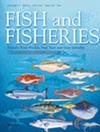Making the Most of Available Data: A Case Study of Converging Analyses to Model an Emerging Fishery for Jonah Crab (Cancer borealis)
IF 6.1
1区 农林科学
Q1 FISHERIES
引用次数: 0
Abstract
Targeted fishing of Jonah crabs (充分利用现有数据:对新兴约拿蟹(北方巨蟹座)渔业进行融合分析的案例研究
近几十年来,随着龙虾数量的减少,对约拿蟹(北方巨蟹)的针对性捕捞大大加强,迫使渔民将重点转移到约拿蟹和其他螃蟹物种上。然而,由于缺乏关于它们的生活史特征、数量和分布的资料,对这种发展中的渔业的有效管理受到限制。渔业的长期可持续性取决于近期努力最大限度地利用现有数据来源的价值,以评估物种丰度并为管理提供信息。我们应用了三种不同的建模方法——传统的线性回归、广义相加模型和经验动态模型——对缅因州-新罕布什尔州近海拖网调查的数据进行建模,以验证早前从渔民访谈中得出的关于约纳蟹分布和迁移的假设。渔民报告的信息与调查数据之间有很强的一致性,包括深度偏好、季节性近海移动和性别特定的迁移模式。这项研究表明,与其简单地采用多模式方法进行模型选择或平均,不如采用统计方法的补充,并与相关的社会科学相结合,可以更好地利用有限的渔业独立数据,以支持新兴渔业可持续管理框架的发展。
本文章由计算机程序翻译,如有差异,请以英文原文为准。
求助全文
约1分钟内获得全文
求助全文
来源期刊

Fish and Fisheries
农林科学-渔业
CiteScore
12.80
自引率
6.00%
发文量
83
期刊介绍:
Fish and Fisheries adopts a broad, interdisciplinary approach to the subject of fish biology and fisheries. It draws contributions in the form of major synoptic papers and syntheses or meta-analyses that lay out new approaches, re-examine existing findings, methods or theory, and discuss papers and commentaries from diverse areas. Focal areas include fish palaeontology, molecular biology and ecology, genetics, biochemistry, physiology, ecology, behaviour, evolutionary studies, conservation, assessment, population dynamics, mathematical modelling, ecosystem analysis and the social, economic and policy aspects of fisheries where they are grounded in a scientific approach. A paper in Fish and Fisheries must draw upon all key elements of the existing literature on a topic, normally have a broad geographic and/or taxonomic scope, and provide general points which make it compelling to a wide range of readers whatever their geographical location. So, in short, we aim to publish articles that make syntheses of old or synoptic, long-term or spatially widespread data, introduce or consolidate fresh concepts or theory, or, in the Ghoti section, briefly justify preliminary, new synoptic ideas. Please note that authors of submissions not meeting this mandate will be directed to the appropriate primary literature.
 求助内容:
求助内容: 应助结果提醒方式:
应助结果提醒方式:


